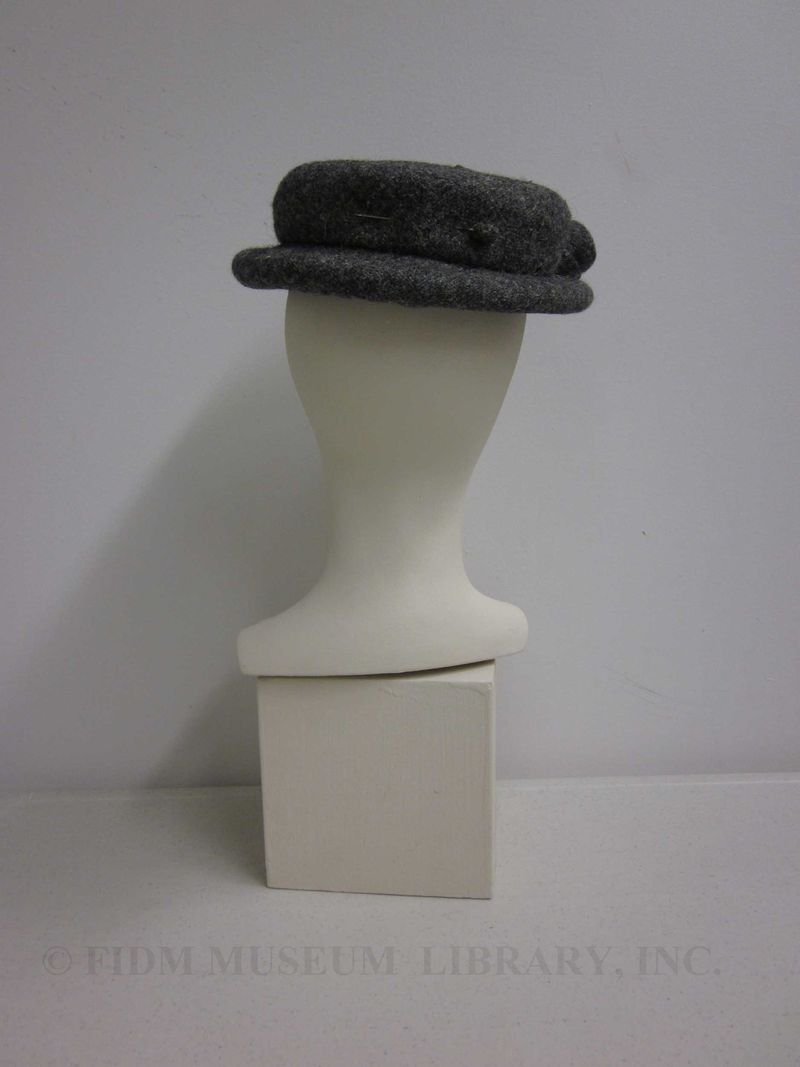Throughout the 1950s, etiquette dictated that women wear hats for everything but the most informal occasions. Whether running errands, meeting friends for lunch, shopping for a new frock, or attending a meeting, the hat was a necessary accessory. A complete ensemble also included gloves (usually white) and matching handbag and shoes. By the end of the decade, increasing informality in dress and the popularity of larger, more elaborate hairstyles meant that hats were no longer strictly required. In 1960, Vogue noted this shift: "In another generation, we heard "you're not dressed if you don't wear a hat," but the obvious truth is that many smart women are now beautifully, though, hatlessly, dressed, wearing marvellous hair as a substitute."2 Instead of wearing hats because they were socially necessary, Vogue encouraged its readers to wear hats because they were an opportunity for "chic women to acquire extra chic."2 By end of the 1960s, however, women's hats had become largely irrelevant to mainstream fashion.
 Cristobal Balenciaga
Cristobal Balenciaga
Fall 1960
Museum Purchase
2003.5.45
Dating from 1960, this Balenciaga hat marks the beginning of the end of the hat era. As a haute couture designer, Balenciaga wasn't interested in dramatic changes simply for the sake of novelty. He never jumped from silhouette to silhouette in pursuit of a new shape. Instead, Balenciaga focused on perfecting the cut, fit and proportion of each garment he created. Accessories, including hats, shoes, belts and handbags, were essential to the overall composition. In pursuit of a balanced ensemble, Balenciaga always developed accessories along with the primary garment. A complete day outfit consisted of a dress, coat, belt, hat, handbag and shoes.
Though Balenciaga certainly had oversight of each hat bearing his label, the details were managed by a design assistant. In the late 1950s, hat design was overseen by Balenciaga's assistant Ramon Esparza. Once designed, hats were completed in one of two millinery workrooms at Balenciaga's Paris atelier. When designing hats, Balenciaga often looked to the regional and ceremonial dress of his native Spain. In the same way that Balenciaga's garment designs often influenced the direction of fashion, his hats had the same effect. In October 1960, Vogue noted that Balenciaga's recent introduction of small hats had suddenly called into question the large-brimmed hats shown by other designers.
Like other examples of Balenciaga hats from 1960, this hat is small, not too much larger than the doll-size hats popular during the 1930s. Period imagery suggests that it would have been worn tilted forward over a smooth twist or chignon hairstyle, and secured with a matching hatpin. Made from heather gray tweed, it would have been paired with a matching or complementary day suit. The self-fabric roses are a witty touch, a reference to the more naturalistic flowers that usually decorate a woman's hat. Unlike fragile real or silk flowers, these sturdy wool roses will always remain fresh from Balenciaga's atelier.
1 “The Truth About The Hat Situation.” Vogue 15 Feb 1960: 75.
2 Ibid.




Ahhh. Balenciaga!
Absolutely this article states perfect about the women hats. Hats had always been taken as a source of fashion. Moreover they adds personality to one’s look.